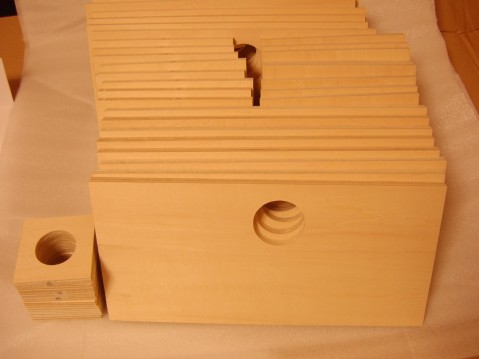
Material plate (pre-cut)
|

Paper ducts were inserted to flanges
Outside paper is laminated to adjust diameter to flange
|
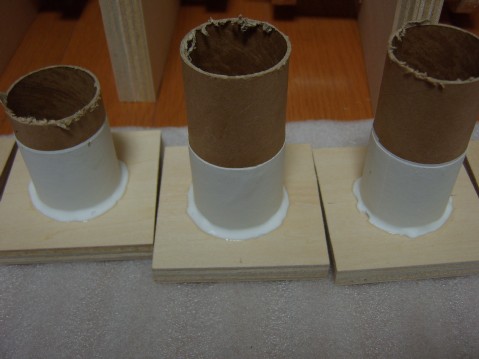
|
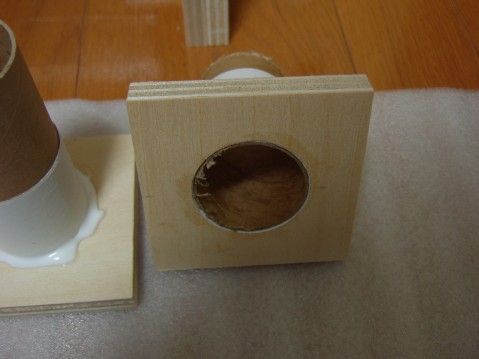
|
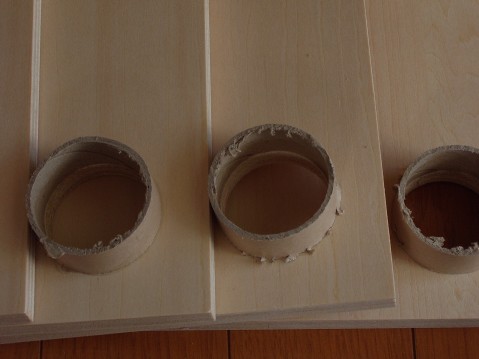
Internal ducts are just glued
|
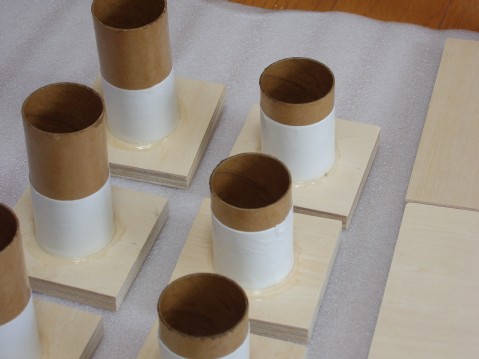
Ducts are smoothed and coated
|

Flanged ducts are fixed with glue and screws
|
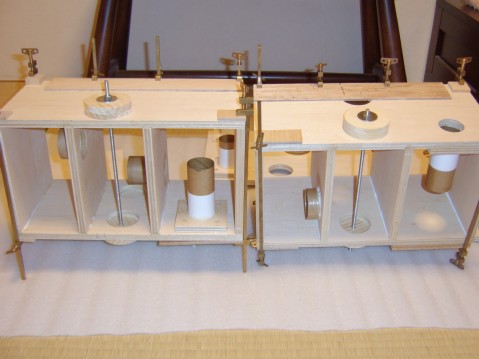
Internal structure
|
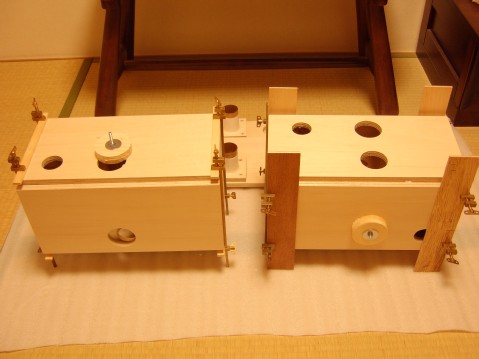
|
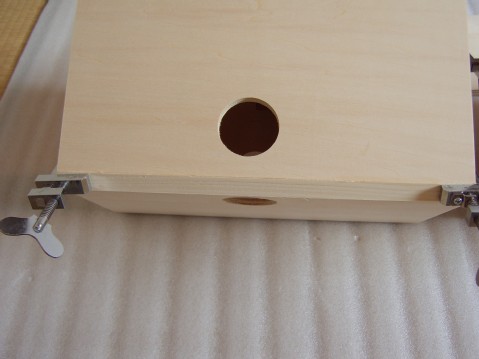
Triangular log is glued to corner
|

Trianguler log is glued and fixed to corner
|
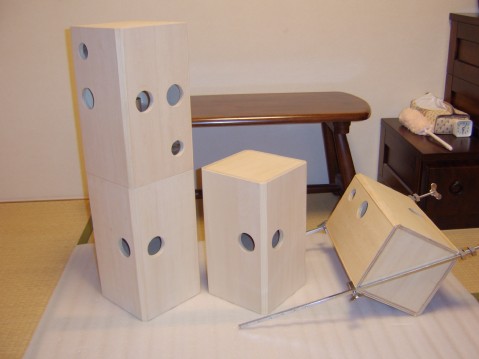
|
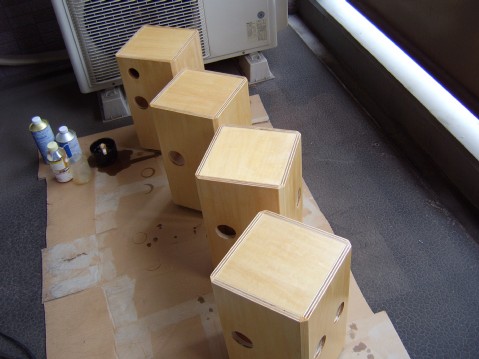
Exterior is painted
|

Now complete
|
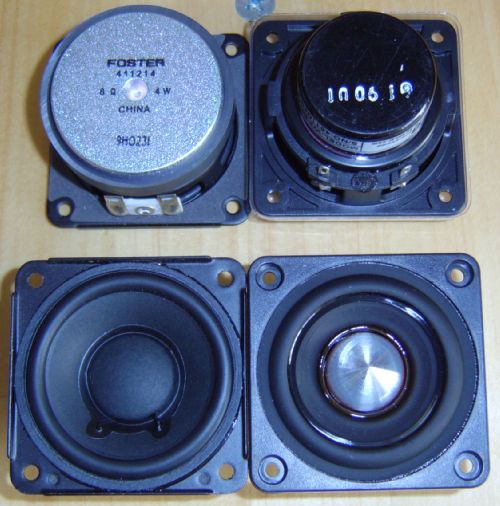
Used drivers for DU050x4
|
Used drivers for 2 systems:
Left: FF57BK (Foster) x 8 units (for 1 pair)
Right: W2-802SE (Tangband) x 8 units (for 1 pair)
Other 2" drivers may suffice.
Drivers with rigid frame are recommended.
There is another 3" model (DU080x4) . You may request drawing of 3" models.
mail to: mcapspeakers@gmail.com
|